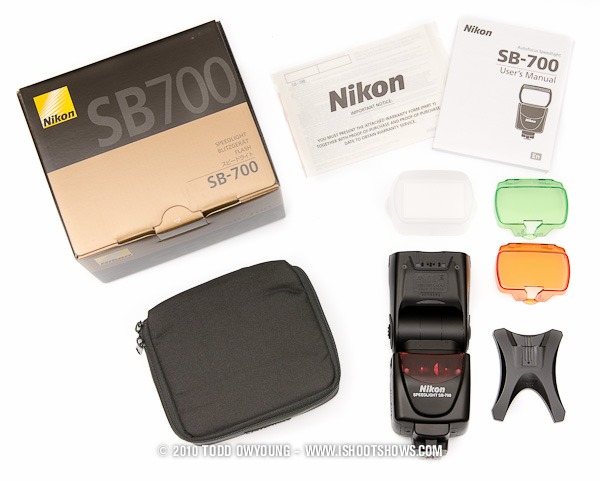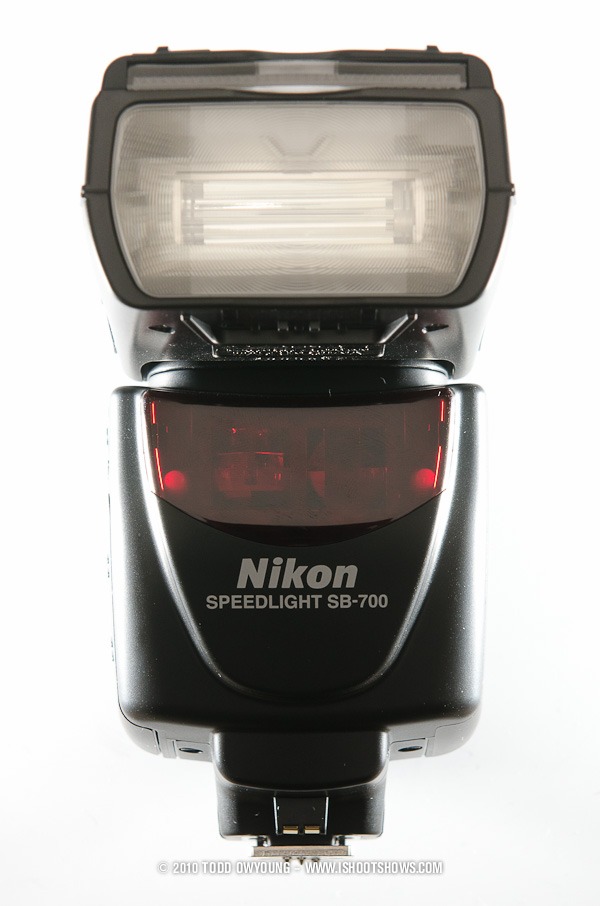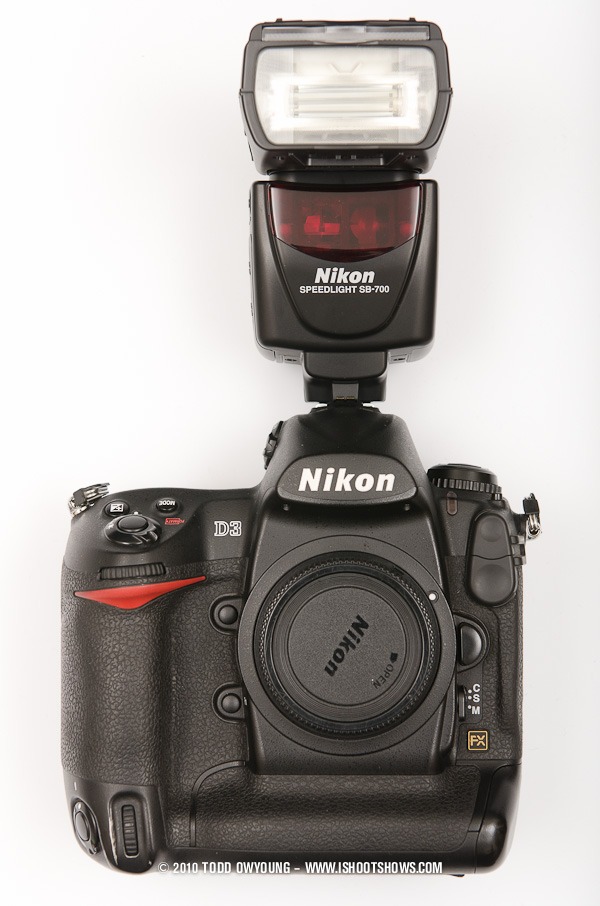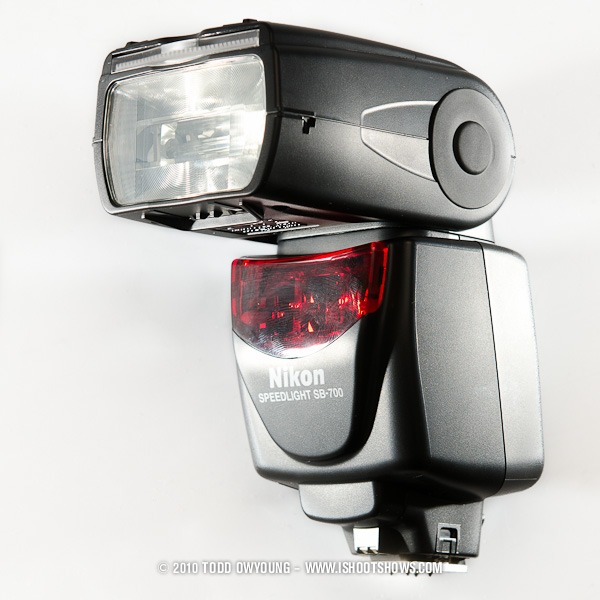
Only introduced in 2004, the Nikon SB-600 has felt outdated for years. This deficit has been especially notable since the replacement of the Nikon SB-800 with the Nikon SB-900 in 2008, which left a huge disparity between the flagship Nikon speedlight and the middle-market option.
The Nikon SB-700 changes all of that completely, updating the base-level flash with many features from the flagship Nikon SB-900 speedlight. And not only does the new Nikon SB-700 make improvements over the SB-600 that it replaces, but it challenges the Nikon SB-900 with a few features and advancements entirely new to the Nikon speedlight family.
Let's take a look at how the new SB-700 stacks up to the SB-600 it replaces and the SB-900 it challenges.
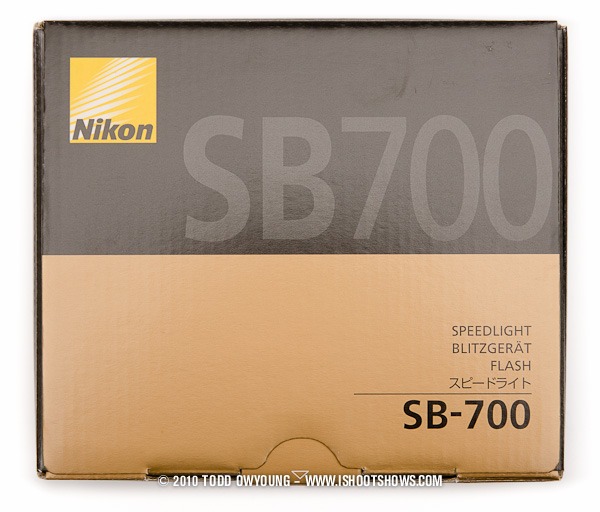
Support These Reviews
The Nikon SB-700 tested in this review was provided on loan by B&H Photo Video in NYC, where I personally buy my owncamera gear. If you find this review helpful, please consider buying your next photo gear purchase from B&H or any of my other my affiliate links.
To learn how you can help support www.ishootshows.com, visit my Support page. It's win-win – you get the goodies, I can buy a cup of tea. Now with that out of the way, let’s get to the review.
What's In The Box
Unlike the Nikon SB-600, you get a full assortment of accessories right out of the box with the SB-700, so there's no need to turn to third-party options for essentials like the diffusion dome. In fact, the included accessories are more in line with the flagship Nikon SB-900.
Included with the SB-700 is a dedicated soft case, stand, diffusion dome, and dedicated hard filters for tungsten and fluorescent color correction.
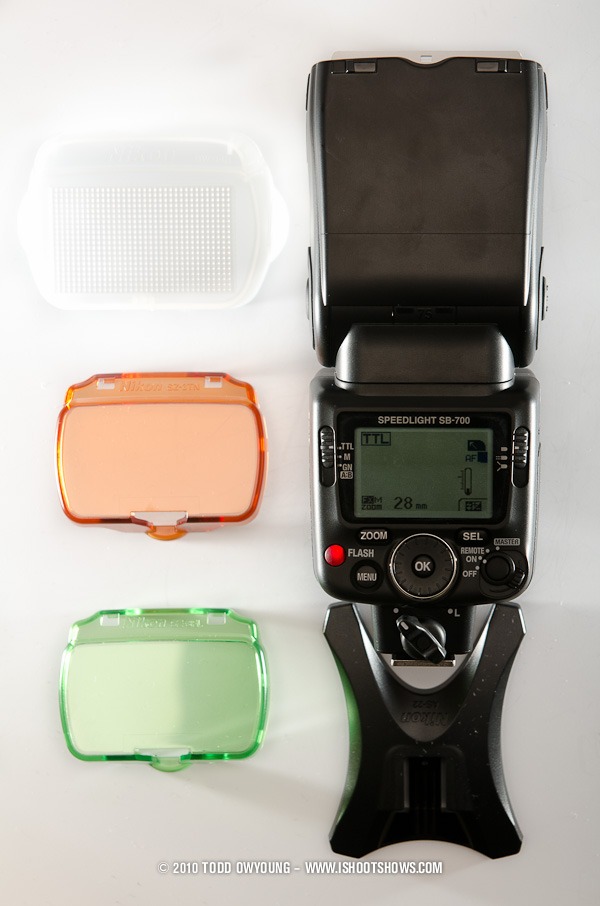
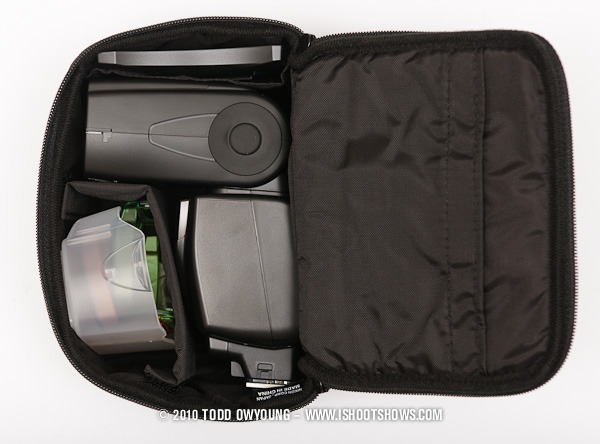
All these goodies fit into the supplied case for the speedlight, which takes a departure from the soft cases of Nikon's other flashes in that it zips open like a suitcase.
Key Features
In the official press release for the new speedlight, Nikon touts the primary key features of the new SB-700 as the following:
- High-end model functions in a compact body
- User interface with intuitive operation
- Wireless control for two remote flash groups via CLS
- Automatic temperature regulation (tackling the automatic shut-off issues of the Nikon SB-900)
- Dedicated hard color filters (fluorescent/incandescent)
In addition, the following advancements are listed as per Nikon's product page
- LCD and layout of controls designed for easy and intuitive operation
- Multi-step auto zoom covers wide 24-120 mm zoom range
- Three illumination patterns–standard, center-weighted and even–available to match every shooting environment
- Automatically detects Nikon FX and Nikon DX formats and selects suitable light distribution angle
- Short recycling time
- AF-assist illumination for multi-point AF, with wide 24-135mm focal range
- Quick wireless control mode allows control of remote flash unit groups A and B flash output level ratios
- Firmware updates via Nikon digital SLR cameras
- Automatically delays recycling time if temperature of flash head rises in order to avoid deterioration of flash head
- Automatically detects type of hard-type color compensation filter (fluorescent and incandescent) and automatically transmits filter information to camera for optimum white balance setting
- Optional Water Guards WG-AS1 (for D3 series), WG-AS2 (for D300 series) and WG-AS3 (for D700) protect camera's accessory shoe contact when SB-700 is mounted on a Nikon digital SLR camera
We'll take a look at these features and how the Nikon SB-700 stacks up to the flagship Nikon SB-900 and the Nikon SB-600 it replaces in this review.
Design
In terms of design, the new SB-700 takes many cues from the SB-900, but delivers in a smaller form factor that's closer to the smaller SB-600.
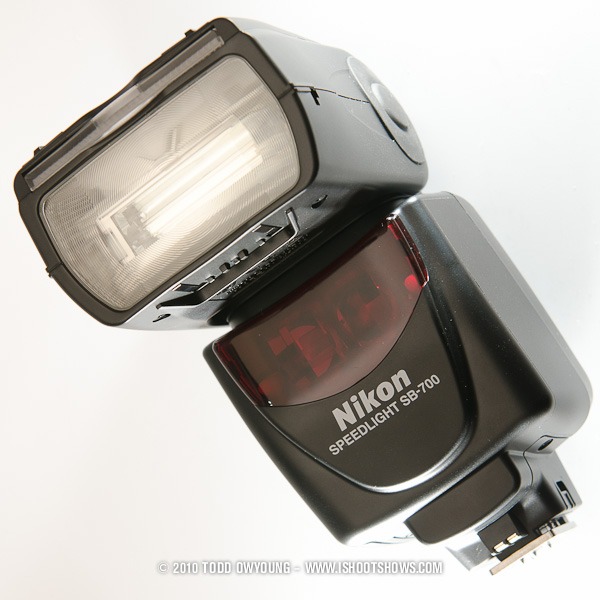

While the SB-900 has always struck me as a pretty huge flash, the SB-700 strikes a nicer balance – it's a much more “reasonable” size overall with nice proportions. Though the size differences are slight, the smaller size of the SB-700 make it much easier to pack into a bag than the SB-900.

The biggest outward change in the SB-700 is an evolution of the SB-900's core user interface, with dedicated controls and a central job dial for quick adjustments.
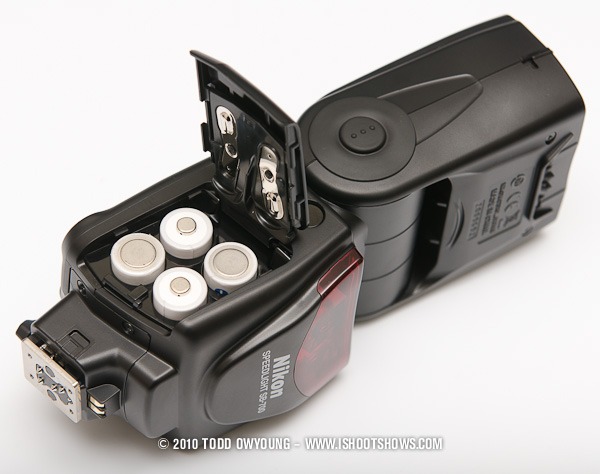
In a slight departure from both the SB-90 and SB-600, the SB-700 features a two-by-two battery arrangement. More simple than the SB-600's awkward three-and-one arrangement, but different than the SB-900's linear configuration.
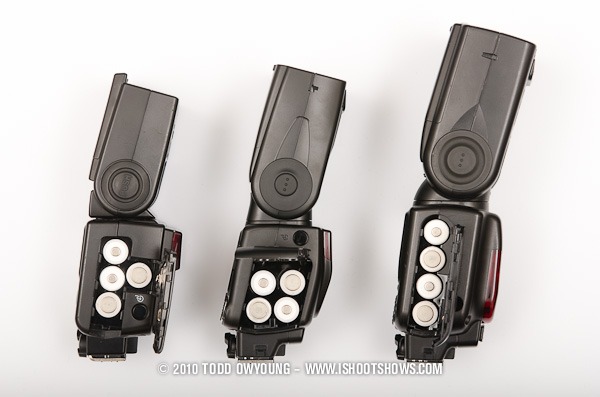
Aesthetics aside, the astute observer has already noted that the SB-700 lacks the connectivity of the SB-900 in terms of an external power option and a PC sync port. The saving grace of SB-700 in terms of the latter is the proliferation of the wireless flash triggers that feature a built-in hotshoe, such as the Yongnuo RF_602 and Phottix Strato.
Build Quality
Overall, the build quality of the SB-700 is a welcome improvement over the SB-600 with a denser, tighter feel. My only real complaint is that the battery door hinge feels a little weaker than that of the SB-900.
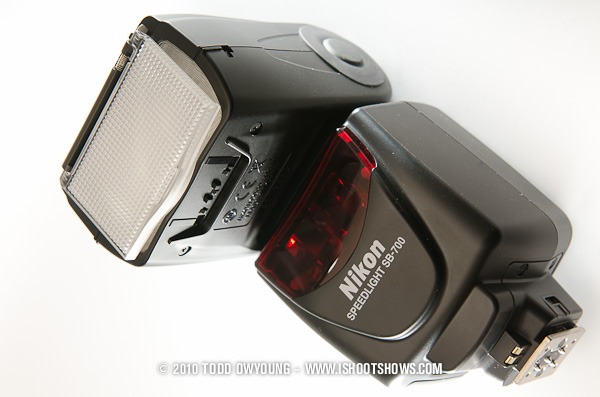
Accessories – Diffusion Dome
One nice upgrade from the SB-600 is the inclusion of a dedicated diffusion dome for the SB-700, which secures to the flash head via small tabs. While it's not the only reason to justify the $100 price difference between the SB-700 and SB-600, it does save you a few bucks not having to grab a third-party diffuser.
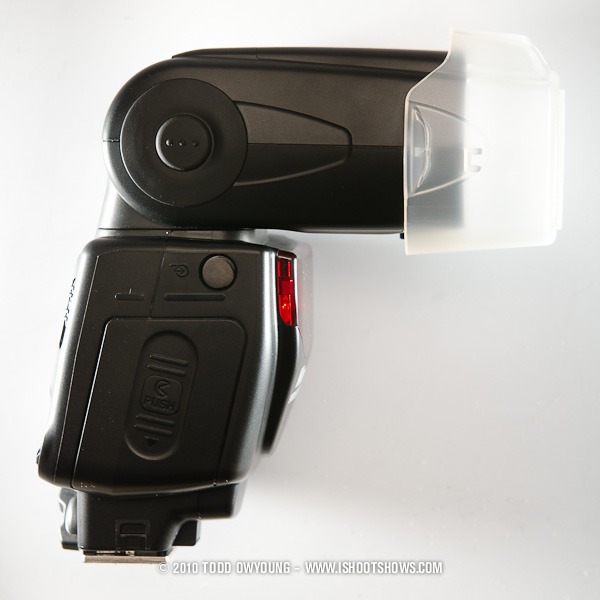
Accessories – Hard Color Filters

Simply put, the color gels for the SB-900 are a pain to use. They're delicate, easy to mangle, and require a separate accessory to attach to the flash and to store them. The Nikon SB-700 does away with all of this with dedicated hard color filters for fluorescent and tungsten correction that snap on just like the filter holders for the SB-900 do. I love that you can throw these filters in a bag without worrying about storing them in a sleeve protector. No more babying involved.

Of course the downside to these hard filters is that they take up more space in your bag – but this is a trade-off I'm morethan willing to accept.
In addition to the hard filters for fluorescent and tungsten correction, an optional set of red, yellow, and blue gel filters and holder are available.
Accessories – AS-22 Flash Stand
As with the SB-600 and SB-900, the Nikon SB-700 comes with a dedicated plastic stand. Just like the SB-900's AS-21 stand, the AS-22 that ships with the SB-700 features a plastic tripod mount – a downgrade from the lowly SB-600's metal threads.
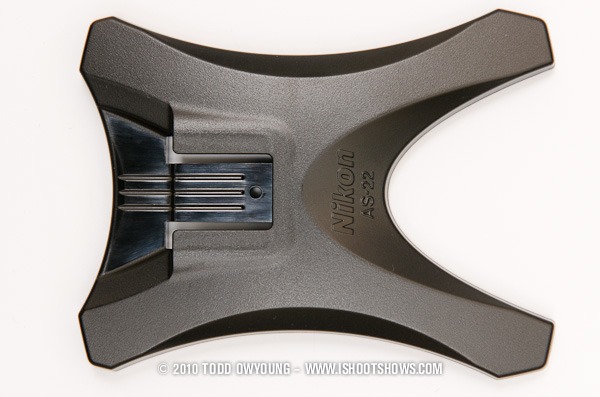
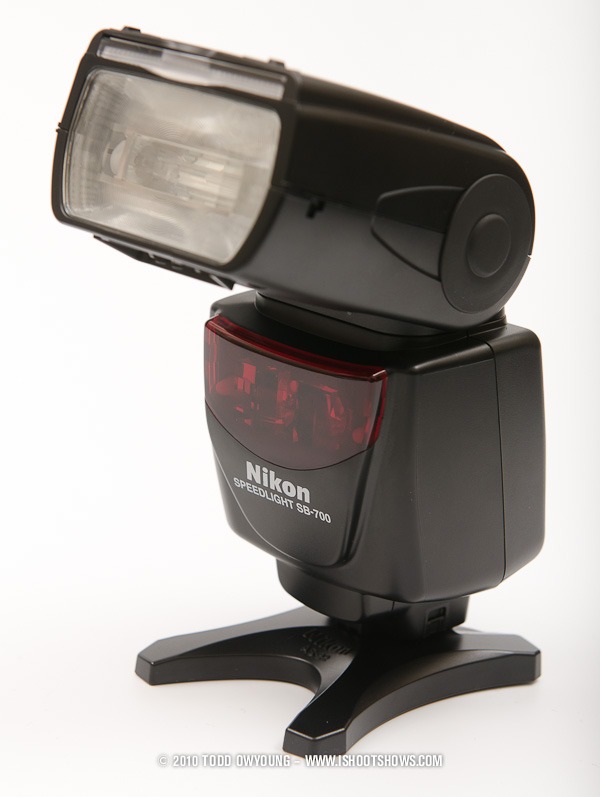
I am happy to say that the mount of the SB-700 is of a standard design – unlike the more narrow clearance of the SB-900, the SB-700 fits all regularly-sized shoes without the need for any modification. This includes fitting the more solidly built AS-19 stand of the SB-600.
Features – Improved User Interface
For me, one of the fantastic improvements with the Nikon SB-700 is a simplified interface that pulls out key features into simple buttons and switches, instead of burying them as menu functions. This is a trend started by the Nikon SB-900, which created a super-easy selector switch for ON, OFF, Remote, and Master modes.
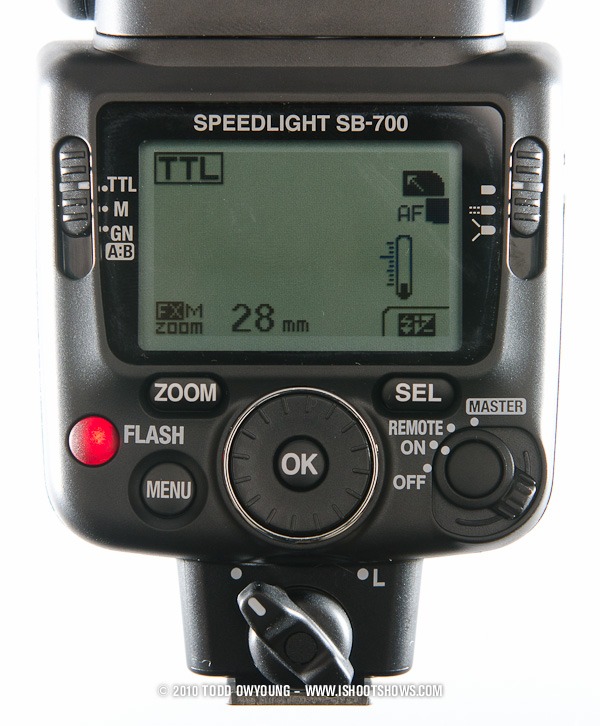
The Nikon SB-700 does the SB-900 two better with dedicated controls for exposure mode (TTL, M, and GN) and flash beam pattern (standard, center-weighted, and even). Just like dedicated buttons on a camera make for faster shooting, so too do these dedicated switches for the essential functions of the flash.
In addition, the SB-700 features a dedicated menu button, which should have your fingers and thumbs rejoicing – no more having to hold or mash buttons like the SB-600 and SB-900 require.
Just like the Nikon SB-900, the SB-700 sports a central jog dial as the primary interface. If you love the wheel on the SB-900, you'll feel right at home with the SB-700.
All these dedicated extra switches building on the core interface of the SB-900 add up to make the SB-700 Nikon's fastest speedlight in my opnion – even more usable than the flagship SB-900.
Features – Built-In Bounce Card & Wide-Angle Diffuser
Just like the SB-600 and SB-900, the SB-700 features a built-in bounce card built into the flash head for more subtle lighting solutions than direct flash.

In addition, the SB-700 features a pull-out wide-angle diffusion panel, which increases the flashes's coverage from 24mm at the widest setting down to 14mm.
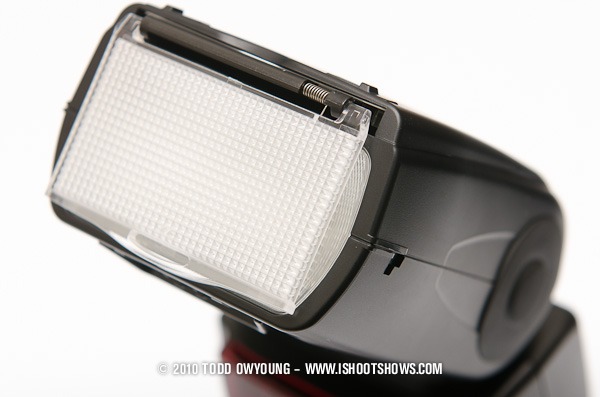
Features – Automatic Temperature Regulation
The big fiasco with the Nikon SB-900 was the new “feature” of automatic shut-off of the flash at high temperatures. While this feature was designed to save your flash from potentially overheating and burning out, in practice it meant that your expensive speedlight was turned into an expensive paperweight if you ran into this temperature limit.
While the SB-900's automatic shutoff could be disabled and Nikon even increased the threshold with a firmware update, this was a little black eye for Nikon on the release of an otherwise amazing flash.
With the Nikon SB-700, Nikon is fighting fire with fire, so to speak, with automatic temperature regulation when the flash detects increasing temperatures. The SB-700 accomplishes this by slowing down the rate of fire when it think you're going to push it into shut down mode, allowing the flash to cool down.
We'll look at a direct comparison between the SB-900 and SB-700 later on in this review.
Features – Commander Mode
The commander mode is an upgrade from the old Nikon SB-600, but not as fully-featured as the Nikon SB-900. While the SB-900 offers control of three individual remote flash groups, the Nikon SB-700 only offers CLS control over two additional groups.
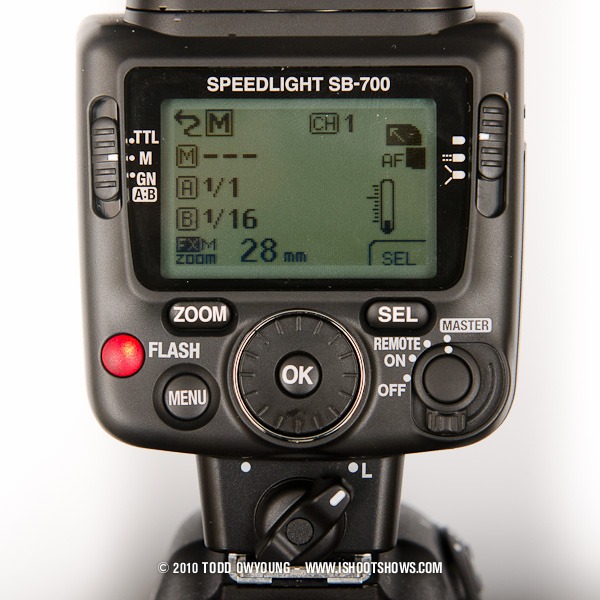
In addition, unlike the SB-900, you can't assign different exposure modes to the groups or the commander flash. This aspect of use is one downside to the simple slider interface for setting the exposure mode – while it's fast, it's not flexible. In this regard, the SB-700 falls short of what even the pop-up flash of cameras like the Nikon D7000 can do, as it's possible to set individual flash exposure modes for each group as a menu function.
All three flash units have to use the same metering mode – either TTL, manual, or the new A:B ratio option. This latter simply sets the power of the remote flashes as a set ratio – 1:1, 1:2, 1:3, etc – which does make quick work of setting rough key and fill ratios for portraiture. While the Nikon SU-800 utilizes this mode of flash ratios, this is a new feature for Nikon's speedlights.
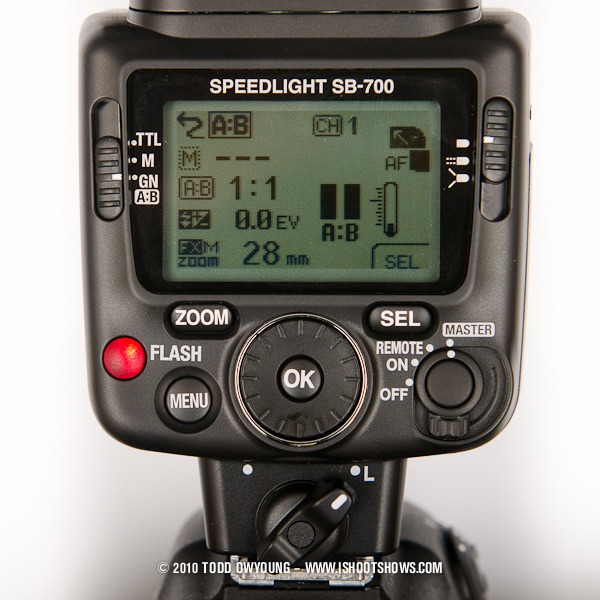
In essence, the limited use of the SB-700 replicates the wireless flash control that's built into most of Nikon's DSLRs with a pop-up flash like the Nikon D700, D7000, and D5000. However, what you get with the Nikon SB-700 over using your camera's pop-up flash is a much more flexible transmitter, since the swiveling head of the SB-700 offers much more creative freedom to bounce, reflect, and otherwise ensure that the TTL signals get to your remote flashes. That, and there's no intense pre-flash as there is when you use a pop-up flash.
Noise
Compared to the SB-600, the SB-700 is a much quieter flash – no high-pitched whine of the capacitor charging up. The noise levels are on-par with the SB-900.
Recycle Time
In upgrade over the Nikon SB-600, the SB-700 shaves off a full second for a speedy recycle time of 2.5 seconds at full power – just a hair slower than the 2.3 second recycle of the Nikon SB-900 with Ni-MH batteries. However, one interesting thing to note here is that the SB-700 features the same 2.5 second recycle with alkaline batteries, while the SB-900's performance drops to 4.0 seconds with alkaline batteries.
So while the SB-900 leads by a hair with Ni-MH chemistry, the SB-700 is ultimately the faster flash overall.
In practice, I actually found that the SB-700 recycled faster than the SB-900 – about 3 second vs 4 seconds.
Thermal Cutoff
With the Nikon SB-900, Nikon introduced a thermal protection mode that monitors the temperature of the flash head and disables use when critical temperatures are reached.
While it's possible to disable this feature, many photographers still raised a fuss over its implementation, because the heat cutoff meant the possibility of being left with a $450 paperweight while your fancy new flash cooled down.
New Thermal Protection:
The new SB-700 promises to change this with a more intelligent system for heat control that still protects the flash head against excessive heat while allowing continued operation (unlike the SB-900).
The catch here is that the SB-700's thermal protection doesn't just shut off when the flash overheats – it slows down recycling time so that the rate of heat-producing flashes is also slowed (or that less-than-full discharges occur, which also reduces gains in heat).
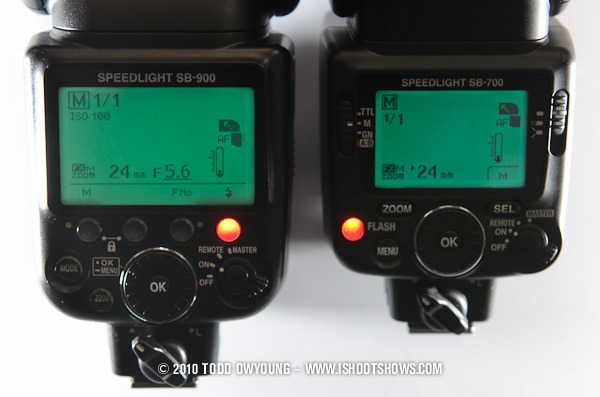
The Test:
| Nikon SB-700 | Nikon SB-900 | |
| Continuous Full-Power Flashes Before Thermal Cutoff | n/a | 25 flashes (1:43) |
| Full-Power Flashes Before Recycle Delay of ~4 Seconds | >50 flashes (4:00) | n/a |
| Full-Power Flashes Before Recycle Delay of ~5 Seconds | >60 flashes (4:45) | n/a |
| Full-Power Flashes Before Recycle Delay of ~6 Seconds | ~70 flashes (5:45) | n/a |
| Full-Power Flashes Before Recycle Delay of ~7 Seconds | ~80 flashes (6:00) | |
| Full-Power Flashes Before Recycle Delay of ~7+ Seconds | ~85 flashes (7:00) |
Both flashes were fired simultaneously at roughly 3 second internals (after both flashes showed ready lights), continuously. The Nikon SB-900 reached its thermal cutoff after 25 full-power flashes over a duration of 1 minute and 43 seconds. The Nikon SB-700, on the other hand, performed without shutting down in excess of 8 minutes of continuous firing, at which I stopped the test.
The SB-700's new thermal regulator began to kick in after over 50 full-power flashes, at which recycling time to full-capacity slowed to roughly 4 seconds. The performance gradually slowed in excess of 7 seconds at approximately 85 flashes and 7 minutes of continuous use. After a full 8 minutes of continuous use, the recycle time was 8 seconds between full-power flashes with no real sign of the SB-700 reaching critical shutoff temperature.
The Verdict:
Here's the simple version of the story: The new Nikon SB-700 spanks the flagship SB-900 in terms of continuous, full-power use. Not only did the SB-700 complete over twice the number of full-power flashes before it began to slow from 3-second (real world) recycle times to ~4 second recycles, it kept going so long that I called the test out of sheer boredom after 8-minutes. Thermal cutoff was never reached.
Flash Power Output
The Nikon SB-700 offers a specified Guide Number of 28 meters (92 feet) at ISO 100 at the 35mm FX setting. This is just very slightly less powerful than the SB-600 it replaces, which specs 30 meters (98 feet) at the same settings.
By comparison, the Nikon SB-900 features 34 meters (111.5 feet) at ISO 100 and the 35mm setting. So, by the numbers, the SB-700 is about a third-stop less powerful than the Nikon SB-900 at full-power. All things considered, this isn't too bad.
But what about in practice? Let's take a look at some exciting histograms and swatch samples.
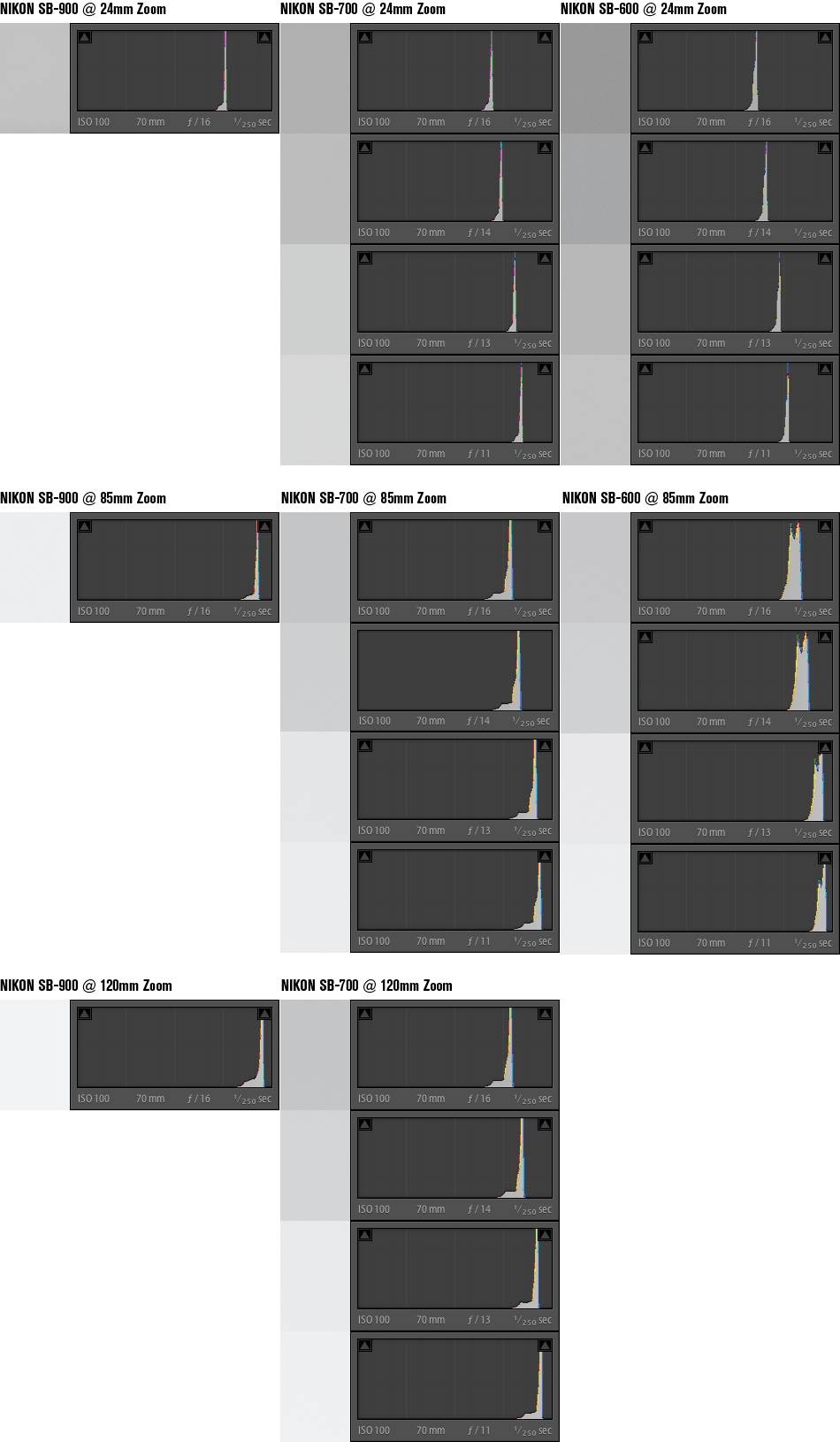
What you're looking at in the above is a composite of gray swatches (at left) and histrograms (at right) for the Nikon SB-900, SB-700, and SB-600, respectively.
Methodology:
Since the Nikon SB-900 is the most powerful of all three tested flashes, I fired the SB-900 at full-power at a white wall at f/16 and 1/250 sec at ISO 100 as the “control.” I repeated the test with the Nikon SB-700 and Nikon SB-600 at f/16 and lowered the aperture by 1/3-stop until an equivalent exposure was achieved by each flash – thereby allowing us gauge the relative power of each flash for real world use.
The distance for all tests was identical. All test images were shot with the Nikon D7000 and Nikon 24-70mm f/2.8 at 70mm at ISO 100 using an identical white balance. The histogram display for each sample is the actual histogram readout from Adobe Lightroom 3.
Since flash power is dependent on the zoom setting of the flash head, all three flashes were tested at shared focal lengths at the ends of their zoom ranges. In addition, the SB-900 and SB-700 were tested at 120mm, the max zoom of the SB-700's range.
Analysis of Flash Power Comparison:
24mm: At 24mm, the SB-700 is only 1/3-stop behind the SB-900 in power, and roughly 1/3-stop more powerful than the SB-600.
85mm: At 85mm, the SB-700 is roughly 2/3-stop behind the SB-900 in power, and about 1/3-stop less powerful than the SB-600 in power at this setting.
120mm: on the Nikon SB-700 is about a stop behind the SB-900 in power.
Overall, this test indicates that the SB-700 is most efficient relative to the SB-900 at its widest flash settings, while the flagship speedlight pulls ahead at longer zoom settings.
Compared to the SB-600, we see a reversal of strength between the two flashes at the extremes of the zoom range, such that any advantage either way is negligible.
Design/Size Comparison
A visual comparison between the SB-600, SB-700, and SB-900, respectively:


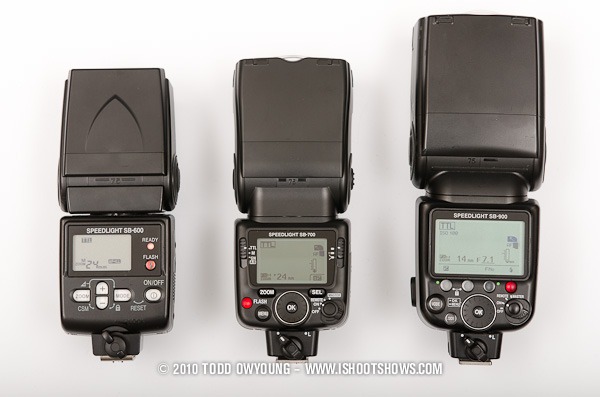
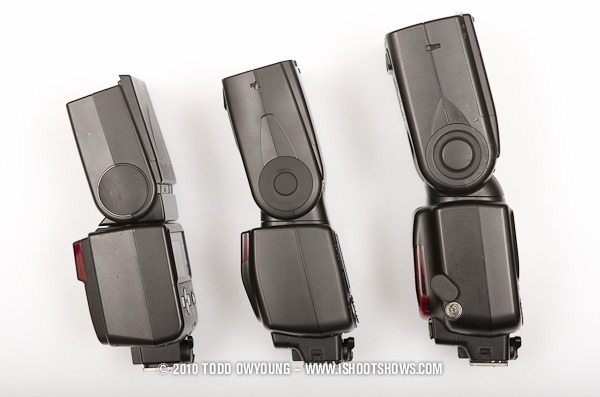
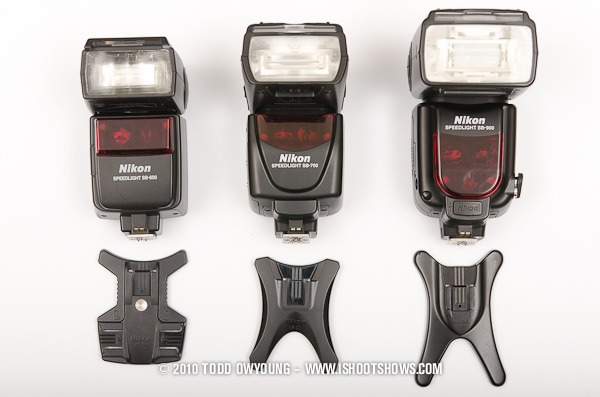
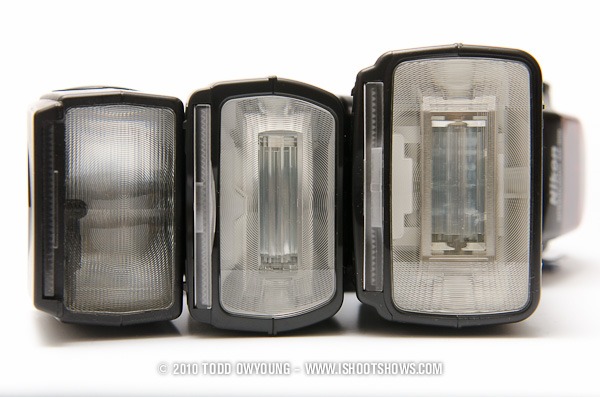
As you can see, the SB-700 is much closer to the size of the SB-600 than the monstrous SB-900, much to the happiness of camera bags everywhere.
Feature & Spec Comparisons
| Nikon SB-700 | Nikon SB-600 | Nikon SB-900 | |
| Guide Number (35mm, ISO 100, FX) |
28m/92ft | 30m/98ft | 34m/111.5ft |
| Recycle Time (Ni-MH) |
2.5 sec | 3.5 sec | 2.3 sec |
| Recycle Time (Alkaline) |
2.5 sec | 2.5 sec | 4.0 sec |
| Flash Beam Patterns | Center, even, standard | Standard | Center, even, standard |
| Minimum Number of Flashes (Ni-MH) |
230 | 220 | 165 |
| Minimum Number of Flashes (Alkaline) |
160 | 200 | 110 |
| Dedicated Mode Controls | Flash, CLS, Beam Pattern | No | CLS Mode |
| Wireless Flash Capabilities | 2-group Commander | No | 3-group commander |
| Optical Trigger (SU-4 Mode) |
Yes | No | Yes |
| Flash Zoom | 24-120mm (14mm w/ diffuser) | 24-85mm(14mm w/ diffuser) | 17-200mm(12mm w/ diffuser) |
| Manual Power Range | 1/1 to 1/128 | 1/1 to 1/64 | 1/1 to 1/128 |
| Built-In Reflector Card | Yes | No | Yes |
| PC synch socket | No | No | Yes |
| Head Swivel | 360º | 270º | 360º |
| External Power Option | No | No | Yes |
| Thermal Protection | Automatic delay of recycle time to slow heating | No | Thermal cut-off imits the number of flashes |
| Size | 71 x 126 x 104.5 mm (2.8 x 5.0 x 4.1 in.) |
68 x 123.5 x 90mm (2.7 x 4.9 x 3.5 in.) |
78.0 x146.0 x 118.5 mm (3.0 x 5.7 x 4.7 in.) |
| Weight | 360 g (12.7 oz.) | 300g (10.6 oz.) | 415 g (14.6 oz.) |
| Included Accessories | Speedlight Stand AS-22 Nikon Diffusion Dome SW-14H Incandescent Filter SZ-3TN Fluorescent Filter SZ-3FL Soft Case SS-700 |
Speedlight stand AS-19 Soft case SS-600 |
Speedlight Stand AS-21 Nikon Diffusion Dome SW-13H Color Filter Set SJ-900 Color Filter Holder SZ-2 Soft Case SS-900 |
| Price | $329.95 | $229.95 | $459.95 |
| Best | Good | Bad | Worst | |
Comparison Summary
Now just looking at the above comparison of specs, what we on the surface is that the Nikon SB-900, unexpectedly, leads in many areas of performance and functionality. However, there are some important distinctions between these three flashes in the Nikon speedlight lineup.
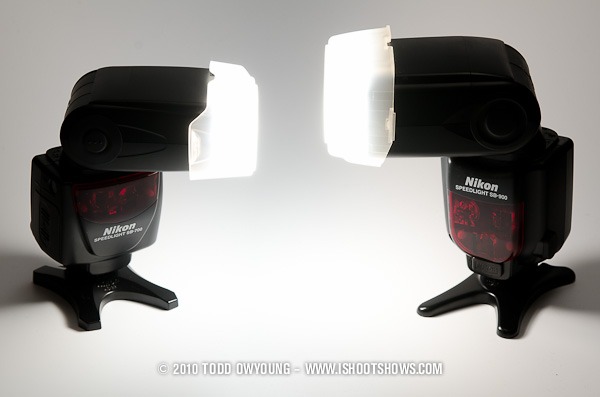
Nikon SB-700 vs Nikon SB-900:
In comparing the new SB-700 to the flagship SB-900, what this choice comes down to is increased flexibility with the SB-900, with more power, control, and connectivity options. For the user that doesn't need all that the SB-900 offers, or who is willing to make a few concessions, the SB-700 offers very close performance in a smaller, cheaper package.
Furthermore, the SB-700 actually trumps the SB-900 in a few important areas, the most prominent of which is the new, smarter thermal protection scheme. In my tests, I found that the SB-900 reached its critical heat cutoff after just 1:43 and 25 full-powered flashes. The SB-700 on the other hand went for 8-minutes with only a slowing of the recycle time, and would have gone longer if I hadn't concluded the test out of sheer boredom.
| Nikon SB-700 Advantages | NIkon SB-900 Advantages |
| 40% increases in minimum number of flashes with Ni-MH (230 vs 165) | More powerful |
| Smaller & lighter | PC Sync Socket |
| Much better intelligent thermal protection (more continuous shooting ability) | Full-featured CLS control |
| User interface w/ more dedicated controls | External power option (Nikon SD-9 battery pack) |
| Cheaper | |
| Hard color filters for fluorescent and tungsten lighting | |
| Faster recycling time with Alkaline batteries (2.5s vs 4.0s) | |
| Standard flash foot (no need for special shoes like the SB-900) |
Nikon SB-700 vs Nikon SB-600:
Comparing the Nikon SB-700 to the Nikon SB-600 that it replaces, we see a huge improvement with better features across the board for almost all areas except for flash power and the price. While the SB-700 commands a $100 premium, it seems well justified with the numerous improvements and expanded features.
| Nikon SB-700 Advantages | Nikon SB-600 Advantages |
| Better user interface | More powerful |
| Thermal protection | Smaller & lighter |
| User interface w/ more dedicated controls | Cheaper |
| Faster recycling time | More minimum flashes with Alkaline batteries (200 vs 160) |
| 3 flash beam patterns | |
| SU-4 optical triggering mode | |
| CLS commander mode | |
| Wider zoom range | |
| 8-stop manual range control | |
| Built-in reflector card | |
| 360º swivel head | |
| Hard color filters for fluorescent and tungsten lighting |
End Notes
I think the fact that the SB-700 replaces the SB-600 but compares more naturally to the flagship SB-900 is a big testament to just how big of a leap forward this speedlight really is.
As I see it, the price of the Nikon SB-700 says it all – this new speedlight sits squarely between the flagship Nikon SB-900 and the outclassed Nikon SB-600 that it replaces. $100 up and you get the flexibility and power of Nikon's flagship. Down-market, the SB-600 packs roughly the same power in a less polished and less full-featured package.
To me, the SB-900 is like a sports car. If you need to go fast, you're going to want that extra juice. The SB-700 is like your commuter car – it's not going to go as fast, but it's essentially more practical in almost every other way. With faster controls, a more intuitive interface, and nearly the same flexibility, all in a smaller, lighter package, and this new flash is hard to deny.
On top of that, one big thing to love about the SB-700 is its new thermal protection, which simply slows down the rate of fire instead of locking you out completely as the SB-900 does. Big win here for shooting on-location and in quick-fire situations.
I personally work with a set of three Nikon SB-900s and two Nikon SB-600 speedlights, and while I won't be replacing any of my current flashes outright, I will definitely grab a couple 700s when the inferior 600s inevitably kick the bucket. Even at $100 saving, I don't think that there's any reason to buy a Nikon SB-600 at this point.
If you can give up a little power and a little flexibility (and can live with limited CLS commander abilities), I think the SB-700 is your new flash.
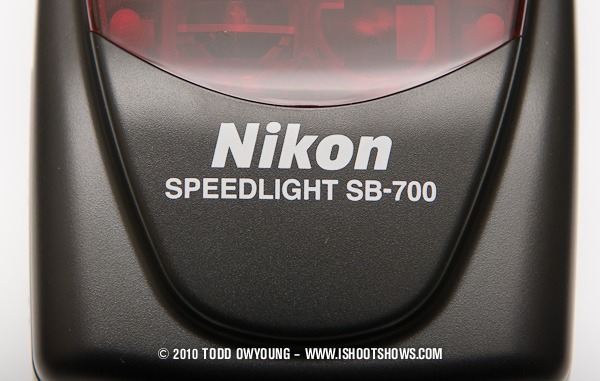
Where To Buy – Recommended Retailers
The Nikon SB-700 tested in this review was provided by B&H Photo Video in NYC. If this review and other content on www.ishootshows.com was helpful to you, please consider supporting this site and purchasing your photo equipment any of the links in this review, my support page, or elsewhere on my site.
If you do buy through B&H or any of my affiliate links, drop me a line! I’d love to hear about what you picked up. B&H is where I personally buy the vast majority of my gear, and I’m looking forward to bringing you more reviews thanks to their equipment loans.
Questions? Comments?
Do you have questions about the new Nikon SB-700? Let me know.
If you have this new flash, what do you think of it? Chime in and have your say!

